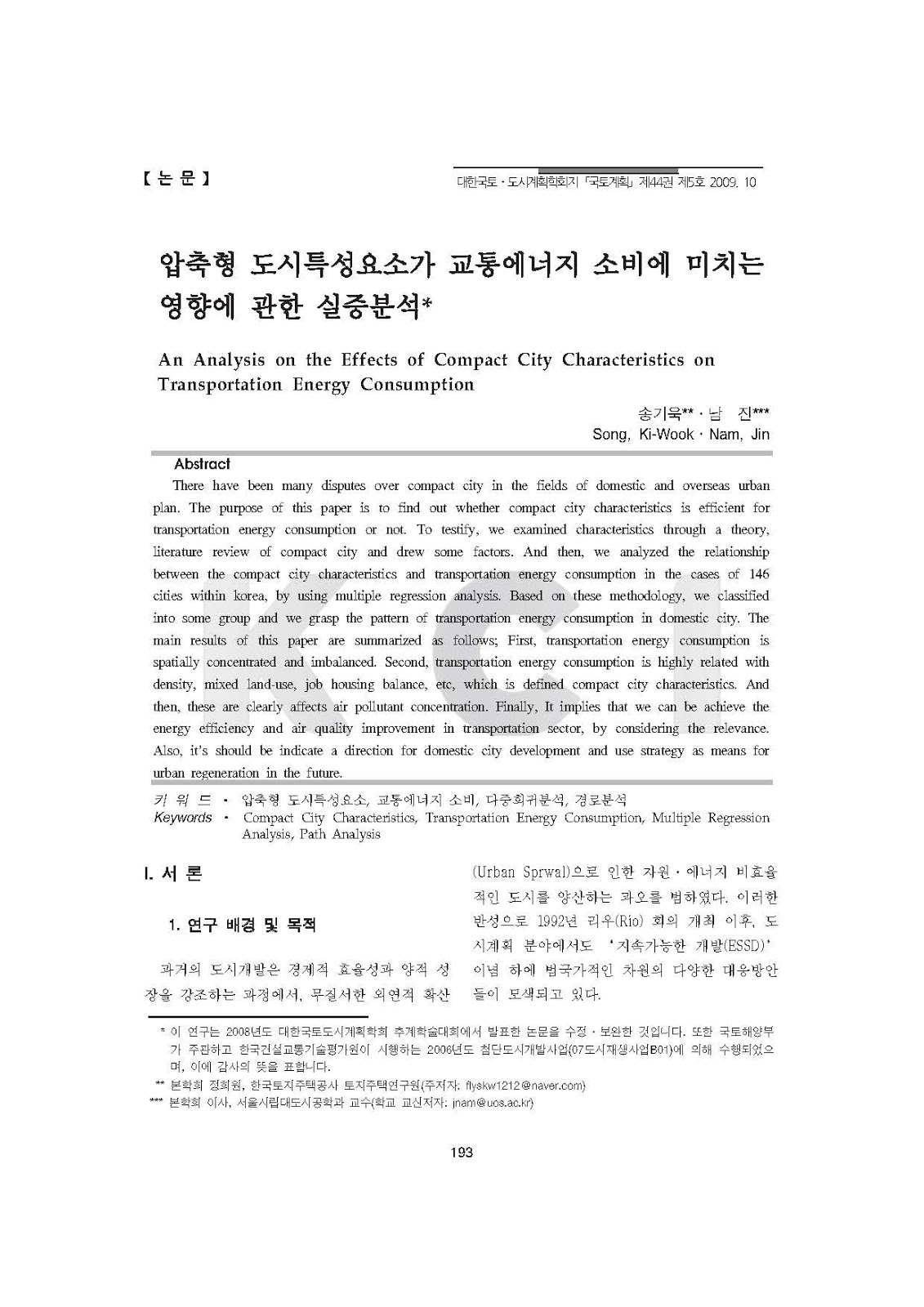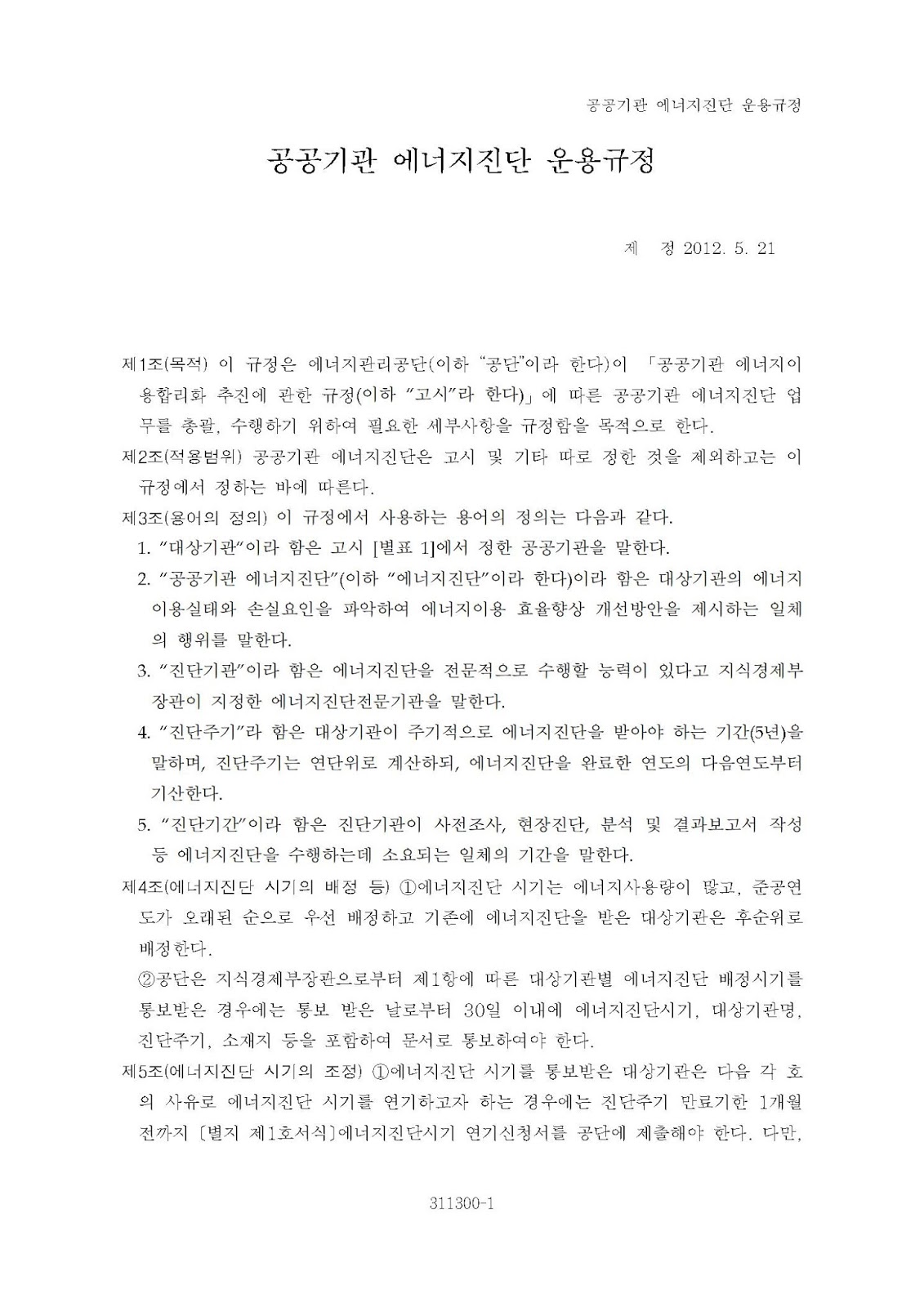압축도시 공간구조 특성이 교통에너지 소비와 대기오염 농도에 미치는 영향
압축도시 공간구조 특성이 교통에너지 소비와 대기오염 농도에 미치는 영향
Effects of Compact City Characteristics on Transportation Energy Consumption and Air Quality
저자 김승남, 이경환, 안건혁
소속 서울대학교, 서울대학교, 공주대학교
학술지정보 대한국토계획학회지
발행정보 대한국토·도시계획학회 2009년
자료제공처 국회도서관 국립중앙도서관 건축도시연구정보센터 한국연구재단
주제분야 공학 > 건축공학
<초록>
The purpose of this study is to examine the effects of compact city characteristics on transportation energy consumption and air pollutant concentration. For this purpose, macro scale characteristics of compact city were divided into three categories through literature review: urban density, urban form (the level of polycentricity and compactness) and transportation infrastructure. And then, various data regarding these characteristics have been gathered from 54 cities in Korea and analyzed by using correlation analysis and path analysis. The main results of this study are as follow. First, a polycentric city or centralized city is more suitable then a monocentric city or dispersed city for reducing transportation energy consumption and rate of air pollution. Second, as public transportation service is increased, more energy is saved which results in air pollutant reduction. Finally, the effects of urban density were found out very complex. As the urban density increases, transportation energy consumption tends to decrease. However, high density development causes concentration of air pollutant at the same time. Therefore, urban density policy should be acted out after considering about the existing air quality. These results lead us to the conclusion that 'decentralized concentration' development is most suitable for sustainable urban structure.
The purpose of this study is to examine the effects of compact city characteristics on transportation energy consumption and air pollutant concentration. For this purpose, macro scale characteristics of compact city were divided into three categories through literature review: urban density, urban form(the level of polycentricity and compactness) and transportation infrastructure. And then, various data regarding these characteristics have been gathered from 54 cities in Korea and analyzed by using correlation analysis and path analysis. The main results of this study are as follow. First, a polycentric city or centralized city is more suitable then a monocentric city or dispersed city for reducing transportation energy consumption and rate of air pollution. Second, as public transportation service is increased, more energy is saved which results in air pollutant reduction. Finally, the effects of urban density were found out very complex. As the urban density increases, transportation energy consumption tends to decrease. However, high density development causes concentration of air pollutant at the same time. Therefore, urban density policy should be acted out after considering about the existing air quality. These results lead us to the conclusion that `decentralized concentration' development is most suitable for sustainable urban structure.
<목차>
압축도시 공간구조 특성이 교통에너지 소비와 대기오염 농도에 미치는 영향 / 김승남 ; 이경환 ; 안건혁 1
Abstract 1
I. 서론 1
1. 연구의 배경 및 목적 1
2. 연구의 대상 및 범위 2
II. 이론적 배경 및 선행연구 검토 2
1. 압축도시 이론과 공간구조의 측정 2
2. 도시 공간구조와 교통의 관계 3
3. 도시공간구조와 대기오염의 관계 4
4. 도시공간구조, 교통에너지, 대기오염 농도의 영향관계 5
III. 분석의 틀 5
1. 연구 문제 5
2. 분석 변수의 설정 5
3. 도시형태의 측정 방법 7
4. 분석 방법 및 흐름 7
IV. 분석 결과 8
1. 압축도시 특성 변수와 교통에너지 및 대기오염 농도 변수의 상관관계 8
2. 도시 형태별 교통에너지 소비 특성 8
3. 압축도시 특성이 교통에너지와 대기오염에 미치는 영향에 대한 경로분석 9
V. 결론 13
인용문헌 15
저희 (주)한국녹색인증원은 '지속가능한 저탄소 녹색건축인증 기술연구소'의 전문기업으로 설립되어, 빠른 제도 변화와 변모하는 건설환경에 이바지하고자 합니다. (주))한국녹색인증원은 건축, 도시, 생태분야가 녹색건축물에 접목될 수 있도록 적절한 요소분석을 통해 에너지 절감형 건축, 자생적 생태환경, 온열환경, 빛환경의 면밀한 조사와 연구로 고객의 삶의 질 향상 및 더 나아가 인류의 존속성에 그 목적을 두고 있습니다. 한국녹색인증원은 친환경컨설팅 전문업체로 주택성능등급, 그린홈, 에너지소비총량제, 에너지성능지표검토서, 건물에너지효율등급, 장수명주택







(%EC%A0%9C19819%ED%98%B8)(20250501)001.jpg)
(%EC%A0%9C34657%ED%98%B8)(20240710)001.jpg)
댓글
댓글 쓰기